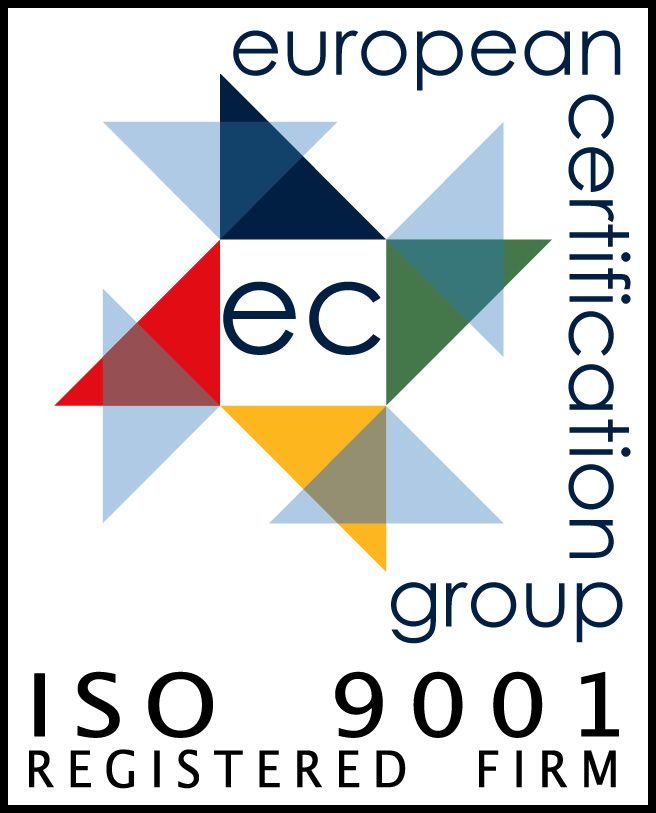
Thermal Oxidizers
Thermal oxidizers use high temperatures to convert contaminants to carbon dioxide and water vapor. Normally the reaction takes place at a temperature ranging from 1382°F to 1562°F. At these temperatures, with good mixing and sufficient oxygen, the destruction efficiency in the combustion chamber is almost 100%.
There are three types of thermal oxidizers: Direct fired, Recuperative oxidizers and Regenerative oxidizers.
Direct Fired Oxidizers
A direct fired oxidizer is effectively a combustion chamber with suitably designed burner. The exhaust temperature from a direct fired unit is typically the same as the combustion chamber temperature. This type of oxidizer is, therefore, normally only used where fuel is free or where the inlet concentration of the airstream to be treated is very high. Typically, direct fired oxidizers are supplied with secondary heat recovery (to heat air, hot water or thermal oil or to raise steam etc.).
Recuperative Oxidizers
Recuperative systems Volatile Organic Compounds (VOCs) can be converted to carbon dioxide and water vapor by thermal oxidation at temperatures typically above 1382°F.
A recuperative thermal oxidizer uses an integral primary shell and tube heat exchanger to preheat the incoming contaminated air using the high-temperature air that is exhausted from the oxidizer.
Where the level of VOC is significant, the heat released during the oxidation of the VOC will also be recovered, improving the cost-effectiveness of the system.
A primary heat exchanger can recover up to 70% of the heat input by the burner or released during the oxidation process by preheating the inlet exhaust stream, reducing the support fuel required by the burner to maintain the required oxidation temperature.
They are a simple, cost-effective, means of destroying VOC where the inlet concentration is relatively high or particularly where heat can be usefully recovered for other processes.
Secondary heat exchangers can also be utilized to recover heat as a utility for other energy requirements.

Regenerative Oxidizers
Regenerative Thermal Oxidizers are the showpiece of any thermal oxidizer portfolio and they can be used in very many applications. Their integral dynamic heat exchange system can be used to produce thermal efficiencies of up to 98%. This high level of thermal efficiency minimizes the requirement for additional support fuel and in many applications allows the RTO to operate autothermally, without the addition of any fuel, in a flameless mode.
The principle of the RTO is simple. The contaminated stream is introduced into the oxidizer via a hot ceramic bed where it picks up heat prior to combustion. The hot volatile gases then enter the combustion chamber where they are oxidized (typically at 14,432°F) in an exothermic reaction which releases additional energy into the system. If there is sufficient heat generated from the internal heat recovery and from the exothermic reaction, then the burner will switch off. In this autothermal, flameless condition, the combustion chamber temperature will be maintained without support fuel.
The gas is held at the designed temperature in the combustion chamber for the required residence time. The cleaned gas then exits through a second bed of ceramic media where it gives up its heat, leaving the oxidizer only slightly hotter than it entered. At the end of this cycle the oxidizer outlet bed is hot and the inlet bed is now cooler. The cycle is therefore reversed periodically, in order to maintain equilibrium and to keep the regained heat within the oxidizer system.
In two canister RTOs this switching of direction gives a very brief emission of partially treated air to atmosphere, but this is not problematical in many applications because emission limits are calculated on a thirty-minute average figure.
With high solvent levels and in particular, on odor control applications, this occasional output may not be acceptable and the exhaust pulsing. Here we utilize a purge system and an additional canister, making the canisters "odd" in number. The “odd” canister is purged prior to change from inlet to outlet mode. The purge system effectively sweeps out any untreated air and puts it back into the system to prevent it from being released into the atmosphere. This allows us to achieve an elevated destruction efficiency.
CECO EIS has specialist knowledge in the design of RTOs for difficult applications including RTOs to treat gases that are:
- Corrosive
- Oxygen deficient
- Containing vapour phase silicon
- Wet
- Containing particulate
The capital cost of a two canister RTO is obviously lower than that of a three canister RTO and it can meet the destruction efficiency required by many industrial processes. For higher destruction efficiencies, however, in the order of 99% removal or greater, three or 'odd' canister units are normally selected.
The RTO performance can be further enhanced by careful design and the use of alternative features such as twin seal dampers to minimize cross-canister contamination. Both thermal and destruction efficiencies can also be maintained over the full range of oxidizer operating volumes, no matter how great the turndown.
Whilst a direct fired oxidizer contains no primary heat recovery, for most processes, the cost of the fuel required to heat a process stream to the combustion temperature necessitates the inclusion of some sort of heat recovery.
Both recuperative and regenerative technologies include heat recovery and are discussed in more detail on other pages.
The choice of which type of thermal oxidizer to use is generally one of economics. We will analyze capital and running costs in relation to the process inlet conditions, the required removal efficiency and the variability of the process. Following this analysis, we will make a recommendation.


